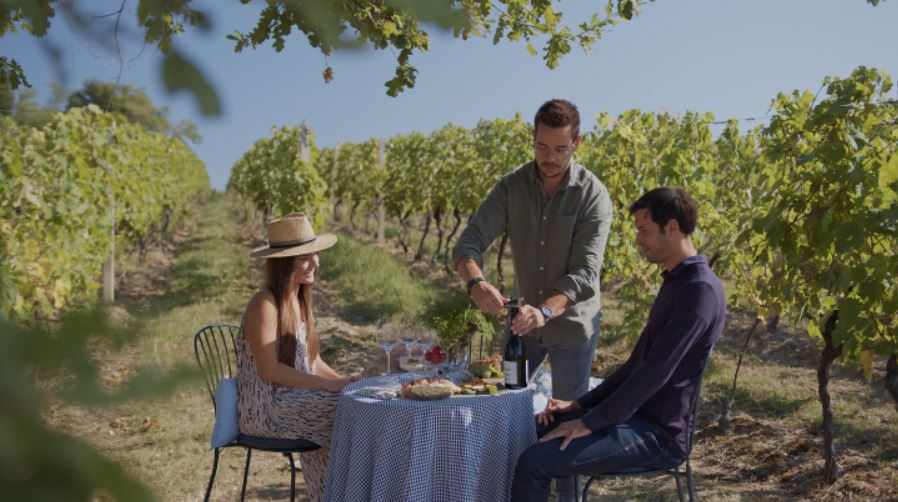Zagreb County Celebrates Successful 2021 Visitor Numbers
January 17, 2022 – Perhaps it's the perfect balance of nature, culture and close proximity to the buzzing, big city? Zagreb County celebrates successful 2021 visitor numbers, despite the ongoing global challenges.
After tourism in 2020 was almost totally nixed, 2021 will be remembered as the year things began moving again. Certainly, that can be said for Zagreb County, who are celebrating after releasing relatively successful visitor numbers for the year.
According to data from the eVisitor system, in Zagreb County in 2021 there were 87.5 per cent more tourist arrivals and 49 per cent more overnight stays compared to 2020.
In 2021, 59 per cent more domestic tourists visited the county and accounted for 9 per cent more overnight stays. Foreign visitor numbers were up a huge 110 per cent on 2020 and their tally of overnight stays was up 91 per cent on the previous year.

In total, 2021's numbers accounted for 58 per cent of the arrivals and 69 per cent of overnight stays that occurred within the record year of 2019.
Most foreign tourists to Zagreb County in 2021 were from Germany, Poland, the Netherlands, Italy, Austria, the Czech Republic, Slovenia, the United States, France and Bosnia and Herzegovina.
Looking at what sort of accommodation visitors chose, most overnight stays were taken in hotels (40 per cent). Household facilities like holiday homes accounted for 25 per cent, accommodation linked to a catering facility stood at 19 per cent and 10 per cent of visitors camped overnight.
The Zagreb County destinations most popular with visitors were Velika Gorica, Sveta Nedelja, Samobor, Jastrebarsko and Ivanić-Grad.
"Considering that 2021 was also marked by the coronavirus pandemic, I think that we can be very satisfied with the achieved tourist results,” commented Zagreb County Tourist Board director Ivana Alilović. “Tourist staff have made great efforts so that domestic and foreign guests can enjoy the diverse offer of our destination while feeling safe. And the Tourist Board of Zagreb County, through various campaigns, systematically worked to promote and attract tourists to the Green Ring of Zagreb."

The director added that the tourism sector had once again shown that it is adaptable and innovative and that the best results are achieved through synergies. She also noted the growing interest in holiday homes that offer security, excellent service and an authentic experience.
Last year, Zagreb County awarded one million kuna in non-refundable grants to entrepreneurs in tourism. The aim was an increase in quality of service and of facilities. As well as the building of new facilities, monies were directed towards the renovation and equipping of existing facilities, with focus given to additions such as swimming pools, wellness and other recreational, sports and entertainment content.
For more news about Zagreb County tourism, bookmark Total Croatia News pages here.
All images courtesy Turistička zajednica Zagrebačke županije
Get a Taste of Zagreb County Jastrebarsko on Wine Country Getaway
January 12, 2022 – Celebrated Croatian-American Chef Richard Gruica has a big enthusiasm for local wine and food. This Saturday he'll lead curious gastronauts through a culinary tour of Zagreb County Jastrebarsko on Wine Country Getaway.
These days, it's easier than ever to find great local food in Croatia's capital. But, if you're searching for authentic Zagreb dishes, what you'll actually find is a cuisine of shared provenance.
For the most part, Zagreb food is actually the traditional menu of Zagreb County and Zagorje. These largely rural areas supply the homes, hotels and restaurants of Zagreb with much of their best food and wine.

In villages and towns surrounding Zagreb, traditional skills are used to get the very best from the land. Often, this know how has been passed down over many generations.
Croatian-American chef Richard Gruica has a big enthusiasm for local wine and food. Splitting his time between the US and Zagreb, there's actually nothing better he likes than setting off on a voyage of culinary discovery in Zagreb County. Thankfully, there's lots to explore.

This Saturday, 15th January, Richard is sharing some of the secrets he's found in Zagreb County Jastrebarsko on Wine Country Getaway. He'll take a small group from Zagreb to one of Croatia's premium wine-growing regions. There, you'll try some of the best wines made in continental Croatia, while learning about indigenous grapes and traditional methods. After sampling the wines, you'll be treated to a meal of traditional local food, with wine paired to the dishes.

Richard's Wine Country Getaway will visit Plešivica, Jastrebarsko, the Samobor Hills, and the southern part of the Žumberak mountains. The tour will visit the estate of a renowned local winemaker. You'll also drop in on a traditional copper – he's the only one in this region still making wooden barrels in the traditional way. After taking in the tradition, you'll head into the hills to enjoy a traditional lunch in a rustic wooden hillside tavern. Richard's tour will conclude with a trip into town for a famous dessert.

Richard's tour of Zagreb County Jastrebarsko on Wine Country Getaway includes
• Transportation
• Cooperage visit and tour
• Wine tasting and tour
• Gourmet lunch with appetizer, choice of entrée and paired wine
• Dessert

All guests will be picked up in front of Hotel Academia (Ul. Ivana Tkalčića 88) at 11am on Saturday 15th January. You'll return to Zagreb at approximately 7.30pm. The cost for Zagreb County Jastrebarsko on Wine Country Getaway is 500 Kn or 75 USD. You can book your place and get more information here.

Around Zagreb: Meet the Top 12 Gault & Millau Restaurants in Zagreb County
January 9, 2022 - Looking for a great dining experience on a day trip outside Zagreb? Gault & Millau has published its first top 100 restaurants guide for Zagreb and Zagreb County.
One of the joys of moving to Zagreb last year was being in a better position to explore Zagreb County. I had no idea that there was so much to see and explore, and the excellent Around Zagreb website has been a great resource for ideas for family day trips from the capital.

(Zagreb County Tourist Board Director, Ivana Alilovic, with the new Gault & Millau guide at the Zagreb County press conference)
There is another excellent resource, which has just been published - the Gault & Millau Croatia 2022 guide to the top 100 restaurants and POP (street food, canines, wine bars, and pastry shops) for Zagreb and its surroundings. While the majority of the entries are for the capital itself, there is a comprehensive and very diverse section of the best places to eat in Zagreb County. There are so many fabulous authentic experiences a short drive from the capital, and now a guide to the best places to combine a day in nature with a fantastic culinary experience. But if you are planning to go at the weekend, make sure you book in advance. I have been stunned by how full of life the restaurants and cafes of Zagreb County have been on our weekend visits.
Here are the top 12 restaurants in Zagreb County, according to what sounds like some fun and very comprehensive research by Gault & Millau Croatia - you can find out more about the guide and how to order it (price 99 kuna) on their official website.
1. Korak Family Estate, Jastrebarsko - 16/20
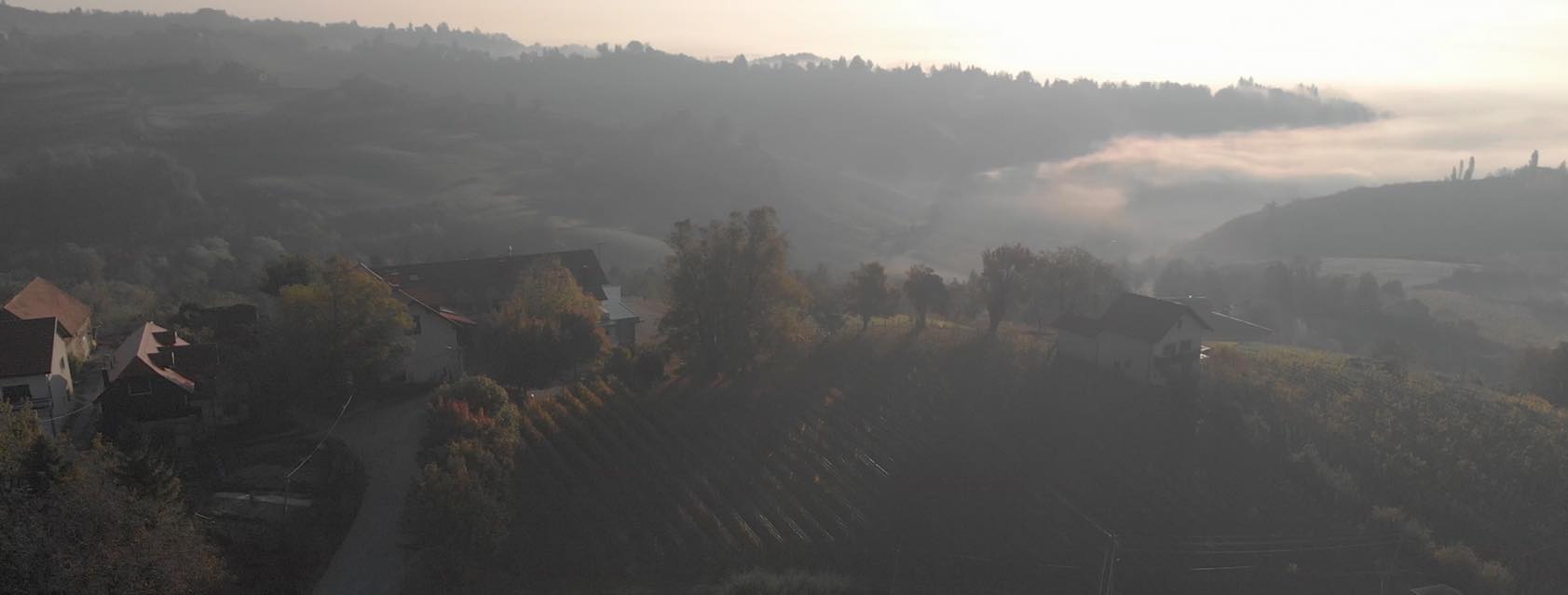
Haute cuisine is usually associated with cities, so exceptions like the restaurant at the Korak family wine estate are rare. This gastronomic oasis is part of the family winery in Plesivica, in the heart of the smallest wine region in Croatia. The view of the hills and vineyards, the terrace in the shade of the old linden trees, the soft breeze, and fine dining combined with their wines - this is Korak. Chef Bernard Korak has elevated the gastronomic offer of this region to new heights. There are no a la carte dishes at the restaurant; you can only find eight and five-course tasting menus, with or without wine pairing, so for lunch you need to set aside about four hours. More info in the guidebook.
www.korakwinery,com/hr/o-imanju
2. Gabreku 1929, Samobor - 13.5/20
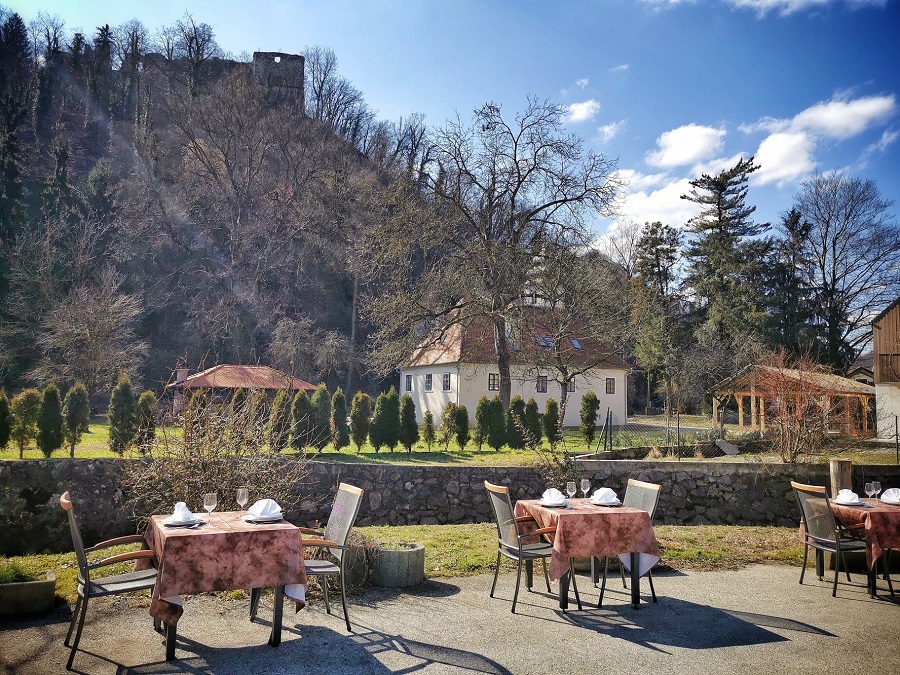
This place has a cult status among many Zagreb residents and is synonymous with the Sunday lunch in nature. Since 1929, Gabrek has been an oasis of traditional cuisine of continental Croatia. It is surrounded by the picturesque walls of the Old Town, by St. Michael's Church, and by the Gradna creek. Their homemade food is honest and tasty, and they have always presented themselves as a tavern serving good food; some dishes have been on the menu for over nine decades. Here you can try entrails specialities: fried brains, sweetbreads, and tripe, and in winter, you can warm yourself up with either some blood sausage or Samobor garlic sausages with sauerkraut and restani krumpir (boiled then fried potatoes with onions) served with mustard and horseradish. More info in the guidebook.
3. Karlo, Jastrebarsko - 13.5/20

Lunch at Karlo is definitely a good incentive to visit Plesivica, especially the part between Klinca Sela and Jaska, where the long and winding Plesivica wine road is located. On that road there is a lovely wooden house with an almost unreal, picture-postcard view. There you can enjoy homemade dishes prepared on a highly professional level (which is what all rustic cuisine should be like). The hand-written one-page menu includes several soups and meat dishes as well as two desserts, and it changes seasonally depending on ingredients. More info in the guidebook.
https://www.facebook.com/Restoran-Karlo-Ple%C5%A1ivica-349403015176262
4. Mon Ami, Velika Gorica - 13.5/20

One of the most famous seafood restaurants in the Zagreb region is located on the main road to Velika Gorica, in the heart of Turopolje. It is always full, so be sure to book a table. The space is divided into sections, there is a separate hall for smaller gatherings, and the interior is decorated in a classic restaurant style. Here you will always find fresh wild white fish and seafood. They also offer the black Turopolje truffle but we did not try it. The menu is special, like those in Asia, with large colour photos of each individual dish - everyone knows what they are going to get so there can be no complaints later! More info in the guidebook.
5. Restoran Potkova (Trajbar), Zapresic - 13/20

If you want to end your outing in nature by having lunch in some well-maintained surroundings, then the Trajbar equestrian club, about 3 km from the centre of Zapresic, is a very good choice. The estate spans 110,000 m2 and includes the forest, equestrian trail, and the enclosed winter riding hall 3,000 m2 in size. The road signs that lead you to Trajbar are good, there is enough parking space, but at weekends it is always very busy as it is popular for large celebrations under a tent. In the indoor area, there are several restaurant halls, while the glass-panelled cafe terrace offers a great view of the huge courtyard, gazebo, and horse riders. Potkova's menu is not large, but it is well-balanced; it follows the seasonal availability of local ingredients, More info in the guidebook.
www.trajbar.hr/vjencanja/restoran-potkova
6. Cowboy Western Rancha, Markusevac Turopljski - 12.5/20

This huge complex on the wooded slopes of Vukomericke Gorice, about 20 km from the centre of Zagreb, is a popular place for an outing. From the terrace of the beautifully maintained wooden hacienda, there is a view of the ranch with horses for recreational riding, but for children, they also offer riding in horse parades, and their delighted parents can record them with their mobile phones. In fine weather, visitors can enjoy a walk, recline in wooden armchairs in the meadow, and have a look at various cowboy iconography arranged around the estate. The interior of the restaurant includes two halls, which can comfortably accommodate about 100 guests, and is entirely made of wood. More info in the guidebook.
7. Gostionica Kod Spilje, Otrusevec - 12.5/20

Kod Spilje, a tavern opposite Grgos Cave - one of the most famous sites of the Samobor region - has been a beloved destination for the inhabitants of Zagreb, Samobor and Slovenia for years. Many people happily come back, as they know they can rely on them for good food. Standard starters include cooked ham, Samobor salami, cottage cheese and sour cream, homemade pork cracklings, tlacenica, and baked strukli (sweet or savoury dough with cottage cheese filling either baked or boiled). Don't miss their generous porcini mushroom soup. More info in the guidebook.
8. Zeleni Papar, Samobor - 12.5/20

Although the interior is very spacious, with large tables spaced comfortably apart, the main advantage of Zeleni Papar is its terrace. Surrounded by the greenery of Perivoj, a Samobor neighbourhood of predominantly family houses with gardens, the terrace resembles a small arboretum, in which low shrubbery, stone garden areas with flowers, and trees function as natural dividers between tables. It is possible to sit outside as long as the weather conditions allow. The restaurant, which is about 20 km from Zagreb, can be reached exclusively by car (you are going to need a satnav as there are no signs along the way) and there is a gravel parking area. The interior looks like a dining room in someone's home, adorned by numerous household items such as Biedermeier commodes, old radio, bakelite telephone, desk lamps, paintings, a piano... - all to make guests feel as if they really are visiting someone they know. More info in the guidebook.
9. Ampelos Hotel Princess - 12/20

Halfway between the urban and the rural, the city bustle and the peace provided by nature, halfway between Zagreb and Karlovac - there is the Jaska region, one of the best-preserved parts of nature in Zagreb County. In this picturesque area, at the foot of the southern part of Plesivica, Hotel Princess was built together with its gastronomic oasis - Ampelos restaurant. The menu is clearly divided into international and local dishes, such as Plesevica copanjak (a savoury cake made of shortcrust pastry filled with spinach, Swiss chard and/or nettles), strukli (sweet or savoury dough with cottage cheese filling - either baked or boiled), stuffed with bacon, cheese and mushrooms, homemade potato cream soup with goat cheese and bacon, Jaska skewer... More info in the guidebook.
www.princess.hr/gastronomija/restoran-ampelos
10. Baraz, Etno-Farma Mirnovec, Samobor - 12/20

The Mirnovec family farm started very ambitiously, with plans to become one of the most visited places in the Samobor area. Hiring Tomislav Spicek, a culinary star, to run their Baraz restaurant menu is just one of the steps towards success. The 17-acre property is located about 20 km from Zagreb, just before Samobor, and it is perfectly landscaped with large, beautiful lawns, playgrounds, and an equestrian club. The most interesting attractions are the wooden houses brought to the farm from different parts of Croatia, some covered in red tiles, and some with authentic thatched roofs. One of these houses Baraz, 'the tavern and tasting room', where chef Spicek has recently created the menu. More info in the guidebook.
https://www.facebook.com/EtnoFarmaMirnovec
11. Taverna 1860, Donja Zelina - 12/20
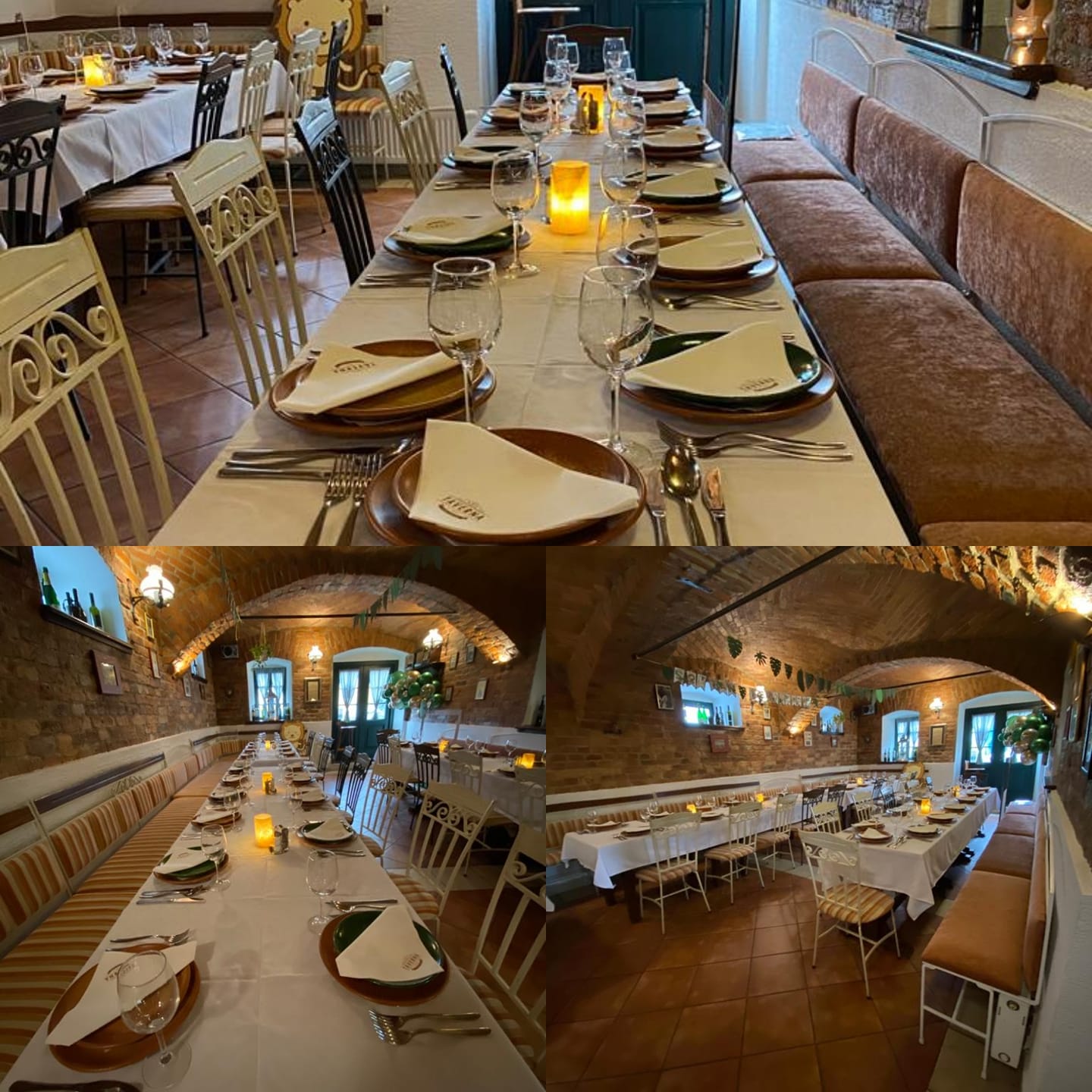
Old brick walls, dim lighting, wood and wrought iron furniture, window niches filled with wine bottles, and an old radio on the shelf - all this gives the basement restaurant its feeling of warmth and intimacy, making you feel you are in a large country house living room. What adds to this feeling are the custom-made ceramic plates and platters; which completely match the dishes served. The board at the entrance to this well-frequented restaurant displays the information about the daily lunch offer, and whatever you offer, it will be fresh, made of quality ingredients from local producers. Depending on the day, you can try some old classic homemade dishes: meat stew with dumplings, meat and wine stew, or pork knuckle, homemade roast sausages and blood sausages with sour cabbage and restani krumpir (boiled and then fried potatoes with onions), all delicious and affordably priced. More info in the guidebook.
www.facebook.com/Taverna-1860-114220496955337
12. Vina Kos - Jurisic, Donja Zelina - 12/20

On the Zelina wine road, in a place called Nespes, first there were the Kos-Jurisic family's vineyards and winery, and then good wine was followed by good food. At their winery, you could always taste their varieties of Pinot gris, Kerner (a cross between Trollinger and Riesling), Chardonnay, Kraljevina,(one of the oldest indigenous white grape varieties in Croatia), and Riseling - at first, the wines were accompanied by cheese and charcuterie platters, and later they ventured into more serious cooking. Recently, they have started offering picnics at the vineyard; the idea was that guests choose one of four baskets full of homemade delicacies and then, with someone dear to their heart, sit on a blanket between the vines and enjoy the tasty bites and fresh air. Once the weather is no longer nice, it is too cold to sit on the ground, but the baskets - Spekec, Picek, Pajcek, and Grincajg, priced between 250 and 350 kuna, are still available at weekends. More info in the guidebook.
Learn more about the gastronomy and tourist offer of Zagreb County on the official tourist board website.
Traditional Turopolje Podgutnica and Poculica Become Wearable Souvenirs
January 4, 2022 - Traditional Turopolje podgutnica and poculica have been given a new role as wearable and modern fashion souvenirs!
This Croatian product was created on the Zagreb County Tourist Board initiative and combines tradition and modern trends to create a memory of the Turopolje region and daily fashion. The new souvenir was presented at the Velika Gorica Visitor Center by the Director of the Zagreb County Tourist Board Ivana Alilović, Mayor of Velika Gorica Krešimir Ačkar, prefect of the Noble Municipality of Turopolje Juraj pl. Odrčić, and representative of the Borboleta brand Sandra Šeparović.
"The souvenir introduces travelers to the local tradition and heritage, and emotionally connects them to unique experiences, sending messages about the beauty of the destination, legends, and lifestyle of the local community. The cooperation between the Zagreb County Tourist Board and the private sector has resulted in an authentic and original design that achieves a high level of recognition. On the other hand, the local population can identify with such a souvenir. As such, podgutnica and poculica were the best promoters of Turopolje because imbued with the creative idea of the Zagreb County Tourist Board, they are a souvenir which, in addition to a cool wearable product, also has a special packaging that reminds you of the destination," said Ivana Alilović.
The bracelet with the motif of a podgutnica and poculica was realized by the Croatian brand Borboleta, known for its numerous collaborations that promote Croatian tradition in the world. The presentation was also attended by the Mayor of Velika Gorica Krešimir Ačkar, under whose auspices the project "Turopolje through objects of memory" was created.

Marko Čolić
"The Croatian origin of the tie is known worldwide today. Therefore, what we want in Velika Gorica and Turopolje is to present to all our visitors the link of Turopolje podgutnica and tie both through various events and symbolic features placed at the entrances to Velika Gorica," said Mayor Krešimir Ačkar.
The presentation was led by the Croatian actress Nataša Janjić, who will undoubtedly wear a new bracelet with a motif on her arm.
"I am looking forward to Croatian products that are wearable, and I always prefer to choose them as part of my fashion combination. I support such promotions because I believe that we should preserve our tradition, but also present it to the world in the most beautiful form, such as bracelets, i.e., the souvenirs that we presented today in Velika Gorica."
Poculica covered the heads of married women, and as a visible sign of her status, the ancient custom has been preserved to this day. Immediately after the wedding, the bride's braids were wrapped around the nape of the neck, and her hair was covered with poculica.
Podgutnica is a scarf or decorated ribbon tied under the neck. It is a decorative accessory on today's Turopolje folk costumes and part of the Turopolje Bandera uniforms. Podgutnica arose from the pride of Turopolje, the love of the Bandera man and his chosen one, and the longing of the soldiers for their beloved home. The nobles of Turopolje protected their region and Croatia, but they also had an obligation to participate in military campaigns for the kingdom. From the responsibility of the Noble Municipality of Turopolje to respond to the king's call to war, the Turopolje Bandera was born.
Numbering 120 to 400 cavalry and infantry, they fought within the kingdom at their own expense and outside the borders at the king's expense. The war military journey of the Turopolje people began several centuries before 1526, and the battles against the Turks on the Mohacs field, where we find the oldest records of the wars of the Turopolje people. Bandera is most often found on the Turkish border, in the Military Frontier (15th-18th century), and during the 17th and 18th centuries on the Italian, German, French, and Czech battlefields. As part of the Croatian army, they were among the Croats who took part in the Thirty Years' War, and in the first part of the 17th century, they reached France.
Their handkerchief, which binds girls and women as a memory of home and a vow of love and fidelity, was noticed by the French and even King Louis XVI, who accepted it as a new fashion detail - a handkerchief tied in the Croatian way "a la Croate". Given the historical tradition of the necktie's origin, Turopolje's military role in European wars, and the prevalence of podgutnica in Turopolje, we have every right to believe that Turopolje is the cradle of the necktie.
To read more about lifestyle in Croatia, follow TCN's dedicated page.
A Jolly Good Trip: Digital Nomads Discover Zagreb County
TCN joins a merry band of digital nomads on a tour of Zagreb County, discovering some of the fine things the region has to offer
Digital nomads residing in Zagreb got together to recap the year at the Zagreb Digital Nomad Jolly WrapUp event that took place last week.
After the opening night hangout and the panel that followed the next day, a merry band of digital nomads set off on tour of Zagreb County on Saturday, December 11th. Sure, Advent in Zagreb might be the star of the show, but there’s plenty to see and do around the Croatian capital: the plan for the day promised nice views, cake, dinner and wine. Of course we tagged along - to the bus we go!

It took a whole five minutes for the sleepy crowd to perk up thanks to James who ingeniously brought along three bottles of rakija, all different kinds at that. Many thanks, kind sir! The goods were generously passed around the bus and we quickly got to chatting - it was looking out to be a jolly good trip indeed.
First stop - Medvedgrad, a 13th century castle perched on the southern slope of Medvednica mountain. The medieval fortress solemnly stands guard over the city of Zagreb, offering a spectacular view over the capital and its surroundings.

Left to ruin for hundreds of years, the castle was restored a few decades ago, with the most recent addition being an educational visitor centre completed in 2020. By a stroke of luck, Medvedgrad suffered no damage in the devastating earthquakes that hit the area last year.

The new visitor centre is a work of art - more on that coming soon in a separate feature. Housed in the south tower and two palaces, several sleek exhibits unveil the secrets of Medvedgrad: medieval history, legends and mysteries, nature and wildlife, all superbly presented through a series of interactive displays. We had loads of fun exploring the castle grounds and admired the winter landscape from the top of the tower.

On to Samobor, a charming little town located a 10 minute drive from the city of Zagreb. The town is known for the lively traditional carnival (Fašnik) that takes place in February, but also for its artisans and craftspeople manufacturing various goods and souvenirs such as the licitar hearts.
It was too cold a day for any ambitious sightseeing and we were perfectly happy to get acquainted with our destination in a different way: feasting on kremšnita, the iconic custard cream cake Samobor is famous for.

We gathered at the Livadić cafe on the main square for a generous serving of kremšnita and coffee to warm up before the last leg of the tour.

And what a finale it was: an early dinner and wine tasting at the Jagunić winery, a family-run establishment and part of the wine road on Plešivica hill. We got there just in time to see the sun set over the rolling hills - quite a scenic backdrop even in the middle of December, and I can only imagine how sublime the view gets in spring when the entire landscape is in bloom.

It was evident how much love and care goes into everything the Jagunić family does, from grape growing and winemaking to hosting guests in their restaurant. We got a taste of the region’s traditional cuisine with a wonderful four course meal, each course paired with a different Jagunić wine.

The family predominantly produces sparkling wines, as well as whites and amber orange wines. They’re made from several grape varieties grown in their own vineyards. As our host explained during his warm welcome speech, their approach to winemaking starts with the soil and ends at the table; they control every step of the process.

Genuine hospitality and a superb eno-gastro experience. It’s a spot not to miss - pair it with a visit to Samobor or the nearby Jastrebarsko town and you have yourself a fantastic day trip. We certainly enjoyed discovering some of the fine things Zagreb County has to offer - thanks for having us, and until next time!
GoWine Gourmet Tourism Project Presents Zagreb County Wine Roads
November 29, 2021 - The first phase of the Gourmet tourism project - GoWine - was presented in Samobor. It includes the tourist boards of Jastrebarsko, Samobor, and Sveti Ivan Zelina with the approval of the Ministry of Tourism and Sports and the support of the Zagreb County Tourist Board.
In the first phase of the Gourmet tourism project GoWine, a map of wine roads was made in a circulation of 5,000 copies, followed by the website www.gowine.hr, the corresponding logo, and an application for an interactive virtual walkthrough of the wine roads. This is the result of several tourist boards carrying out activities together to develop a tourist product and promote the destination, reports HRTurizam.
The GoWine website and an interactive map provide an overview of all members of the three wine roads from Zagreb County, the availability of their direct contacts, and navigation to each of the wineries.
"Zagreb and Zagreb County form a space through which a large number of visitors, businesses, and tourists pass during one year, and the local population often chooses Zagreb County wine roads for their weekend destination. Therefore, Martina Paladina, director of the Samobor Tourist Board, Petra Masnec, director of the Tourist Board of Jastrebarsko, and my little tourist board decided to produce an interactive tool that would allow you to quickly find the desired location and a unified and complete list of destinations. Therefore, in the first phase of the project, we dedicated ourselves to the wine roads of our county, followed by accommodation and catering facilities and rural households," said the director of the Sveti Ivan Zelina Tourist Board and project coordinator Marinka Zubčić Mubrin, adding that the project established a basis for integrated gourmet tourism management to create a recognizable tourist destination product that they believe will be an excellent boost to the competitiveness of Zagreb County tourism.
Reducing the fragmentation of information and a more extensive overview of the gourmet offer of this area makes the decision easier for visitors. In addition, it opens new business opportunities for winemakers and other tourist activities.
Thus, domestic and foreign wine tourists, residents of Bregova Hrvatska, and all other passers-by who want to explore the wine roads of Zagreb County now have a new tool that makes it easier for them to find and travel to their favorite wine destinations.
The interactive virtual walk and web application are done by Otokar Crnalić from the 360 Provideo agency. The logo and wine list were created by Marko Jovanovac from the Symbol agency, while the GoWine website was made by Goran Kukočevac from Getim.
To read more about lifestyle in Croatia, follow TCN's dedicated page.
Days of Traditional Croatian Flavors Begin in Zagreb County!
November 16, 2021 - The Days of Traditional Croatian Flavors began on November 15, jointly organized by 11 county tourist boards in cooperation with local restaurants and under the Ministry of Tourism and Sports. A press conference was held in Zagreb at the Zagreb County Tourist Board to present the culinary event officially.
In the next 14 days, lovers of good food will be able to enjoy local dishes made from traditional ingredients and traditional recipes in 108 restaurants. Each facility will offer two menus of three courses at prices starting from 95 kn, 125 kn, or 195 kn. A list of all restaurants participating in the event can be found at www.okusi.hr.

Twelve facilities are participating from the Zagreb County area, and carry the Zagreb Region Traditional Flavors standard. During this period, guests will be able to enjoy the traditional gastronomic specialties of the Zagreb region in the following facilities: Bistro Babriga (Velika Gorica), Ekopark Krašograd (Pisarovina), Hotel Bunčić (Vrbovec), Hotel Princess (Jastrebarsko), Restaurant Ivančić (Jastrebarsko), Izletište Suhina (Sveta Nedelja), Restaurant Samoborska klet (Samobor), Rural tourism Kezele (Ivanić-Grad), Rural household Stara preša (Šenkovec), Excursion site Vina Kos-Jurišić (Sveti Ivan Zelina), Restaurant Mon Ami (Velika Gorica) and Vinogradarska kuća Braje (Jastrebarsko).

The Zagreb County Tourist Board continues with a series of promotional activities emphasizing the use of photographs as a means of communicating on social networks.
"Local gastronomy, with its flavors and aromas, as part of the culture, heritage, customs and everyday life of the people, is increasingly prominent in the world as an unavoidable component of the tourist offer. As a value and a new quality that provides experiences of something that is different. And what is different, no doubt, is what is local, original, and traditional. With this project, we all want to influence the preservation and promotion of identity and tradition and the image of our authentic, green and sustainable destination in general," said the director of the Zagreb County Tourist Board, Ivana Alilović.
For more, make sure to check out our dedicated lifestyle section.
Discovering Authentic Croatia's Secrets With Seoski Tourism
November 4, 2021 – Village tourism or countryside tourism - Seoski tourism in Croatia - offers authentic, traditional experiences. Aleksandra Kuratko, secretary of Udruga ruralnog turizma Hrvatske (Croatian Rural Tourism Association) tells us more about it, and their work to help facilitate it
Croatia's visitor offer is evolving and expanding. There are exciting aspects of authentic Croatia to be discovered. Away from the beach, villages inland often look remarkably similar to how they did one hundred years ago. There, crops are grown and produce made in ways passed down through generations of families. And, in some lucky instances, these family farmers are willing to open their doors, invite you inside and show you how they live.
 Bread from the peka at Agroturizam Antunović on Pelješac
Bread from the peka at Agroturizam Antunović on Pelješac
Seoski Tourism – translated as either village tourism or countryside tourism – is just that. Family farms that offer hospitality. These are some of the most homely and most welcoming accommodation experiences you can have in Croatia. Offering sights and sounds, tastes and flavours that you can't find anywhere else, visits or stays in Seoski Tourism places have long been loved by locals for weekend breaks or holidays outside peak summer. But, increasingly, these authentic Croatia experiences are being discovered by international visitors.
 Moslavina goats at Kezele family farm © Davor Konjikušić
Moslavina goats at Kezele family farm © Davor Konjikušić
One institution trying to facilitate the growth in interest is Udruga ruralnog turizma Hrvatske - Croatian Rural Tourism Association. Since it was formed in 2016, they have tried to bring together Croatia's family farm hosts, to promote them and educate them, and to build bridges between these independents and tourist boards, tourist agencies, educators and even the wider world outside Croatia.
 Seoski turizam Kezele in Šumećani, on the border of Zagreb County and Bjelovar Bilogora County © Davor Konjikušić
Seoski turizam Kezele in Šumećani, on the border of Zagreb County and Bjelovar Bilogora County © Davor Konjikušić
Based in Ivanić-Grad, Zagreb County, the Croatian Rural Tourism Association is currently touring the length and breadth of the country, holding workshops with as many Seoski Tourism family farms that will come. And if the farmwork doesn't allow them free time, then they can attend Croatian Rural Tourism Association workshops online.
On the eve of the association's online Seoski Tourism workshops for Central Croatia and Slavonia, TCN interviewed Aleksandra Kuratko, secretary of Udruga ruralnog turizma Hrvatske, to find out more about Seoski Tourism in Croatia.
 Prigorje specialties at Rakić family farm
Prigorje specialties at Rakić family farm
My name is Aleksandra Kuratko and I am secretary of Udruga ruralnog turizma Hrvatske. As an association, we are 5 years old.
We have 35 members, most of whom are service providers in what we call Seoski Tourism. We also have several tourist boards and two educational institutions as members.
 Bilogora horses in autumn at Agroturizam Na malenom brijegu © Vladimir Vlajinić
Bilogora horses in autumn at Agroturizam Na malenom brijegu © Vladimir Vlajinić
Seoski tourism is not quite the same as rural tourism, because rural tourism is many different types of tourism that happen in rural areas. Seoski tourism - which you might translate as village tourism - is quite specific. We assemble people who work in agriculture and who, at the same time, are also offering hospitality. In English, you might call them Farm Stays. Or Agro-tourism – a merging of agriculture and tourism.
 Fresh vegetables at Agroturizam Antunović on Pelješac
Fresh vegetables at Agroturizam Antunović on Pelješac
People who work on agricultural estates often take care of local cultural heritage. For example, they might maintain and renew traditional wooden or stone houses. Many also have etno collections, in which they preserve different objects from their region. Some of these objects might have been used in agriculture and households hundreds of years ago. So, they are preserving the cultural heritage of Croatian villages. This is what we call material cultural heritage. But, there's another kind.
 Cultural heritage preserved in one Slavonian village © Mario Romulić
Cultural heritage preserved in one Slavonian village © Mario Romulić
Non-material cultural heritage is also a part. That might be preserving old recipes of traditional, regionally-specific dishes. Or, it might be showcasing the songs and dance of local music.
We are currently running a project which is supported by the Croatian Ministry of Tourism and Sports in which we hold 37 Seoski Tourism workshops in the field all over Croatia. There will also be around 15 online workshops. The workshops are aimed at colleagues who currently operate in Seoski Tourism – they work in agriculture and offer hospitality. Also invited are local tourist boards and local action groups.
 Photo from URTH workshop in Slatina
Photo from URTH workshop in Slatina
So far, we conducted 20 workshops in the regions of Central Croatia, Slavonia and Baranja, and Podunavlje. From next week until the end of the year, we will conduct the workshops in Istria, Kvarner, Lika and Dalmatia. Some service providers were not able to attend earlier workshops, because of work commitments of Covid. So, we decided to also offer access to the workshops online. Tomorrow is our first online workshop for Central Croatia and on Friday it's the online workshop for Slavonia.
These workshops are interactive discussions between our association, service providers and all other stakeholders. We discuss the legislative framework, which can be extremely complex. We talk about new trends in tourism for the post-pandemic era. We also discuss the importance of integrating cultural heritage in digital promotion.
 Donkey farm at Agroturizam Antunović on Pelješac
Donkey farm at Agroturizam Antunović on Pelješac
For the legislative framework, we have initiated the formation of a working group for the development of Seoski Tourism, which is now operating in the Croatian Ministry of Tourism and Sports. So, at the workshops, we ask if anyone is having issues. We collect the responses and address them in the working group.
Part of the workshop is the presentation of a new web application of Seoski Tourism, which we have developed with Croatian Ministry of Tourism and Sports. It has two purposes. One is to create a digital catalogue of Croatian Seoski Tourism. You can see region by region some of the Seoski Tourism options – currently around 40, those who have already enrolled.
 Podravina Etno rooms at Zlatni klas Otrovanec
Podravina Etno rooms at Zlatni klas Otrovanec
A version of the app is currently available on the website of the National Tourist Board. But, they are building a new website. The forthcoming version of the catalogue will likely be more user-friendly with many more functions and options. On the new website, Croatia's Seoski Tourism options will be detailed in many different languages. It should be a great resource not only for tourists but for travel agencies, journalists like you and for educational institutions. That's the reason we are devoting time in our workshops to encourage Seoski Tourism providers to enroll. We are just at the beginning of the process.
 Grešna pilnica in Zagorje © Jasna Podboj
Grešna pilnica in Zagorje © Jasna Podboj
The second purpose of the app is to collect information about the service providers. This info will be used by our working group when defining a Croatian model of Seoski Tourism. So far, we have taken examples from Slovenia, Italy and other countries that are successful with Seoski Tourism. But, these models were entered into our legislative system without fully considering our distinct business and cultural environments. That is now about to change.
We are very happy that, following many years of partially successful advocacy, there is now political will at a ministerial level to really shape things up, to change the laws and regulations in order to facilitate Seoski Tourism. We want to encourage more Seoski Tourism, not to have people from agriculture being turned away because of the difficulty of the process and bureaucracy.
 Medieval Theme Park San Michael © Silvia Otočan
Medieval Theme Park San Michael © Silvia Otočan
You said part of the workshops will focus on new trends. What are some of these?
Research has been done by a working group that is developing a new tourism strategy for Croatia. It's called Strategy for Sustainable Tourism to 2030. Under the auspices of this group, a number of research fields have been analysed.
The collected data shows that a huge percentage of tourists are now more inclined to eat locally grown and healthy food. They want to spend their time on estates that are run in accordance with ecological principles. So, they really care about issues like how waste is disposed of etc. They also pay a lot of attention to culture. They are curious to learn exactly how we are living, how we are working and how we produce things. They want to learn about our society and culture. And, importantly, they really care about how they spend their money. Above all, they want to spend money in areas that can help support local communities.
 Prigorje Breakfast at Rakić Family Farm
Prigorje Breakfast at Rakić Family Farm
For us, this is really important. Because Seoski Tourism answers these demands to an incredibly high level. We do produce local, healthy food. Not only on the agricultural estates where you can experience Seoski Tourism, but also from their neighbours who just do agriculture. We are concerned with ecology, we protect cultural heritage and the money spent in Seoski Tourism stays in local communities, where it has very beneficial effects.
In the digital promotion part of the workshops we are trying to persuade people about the importance of their online presence. Basically, these days, if you're not online, it's almost like you don't exist. So, we try to explain the importance of having good-quality photos, short videos and a regular online presence.
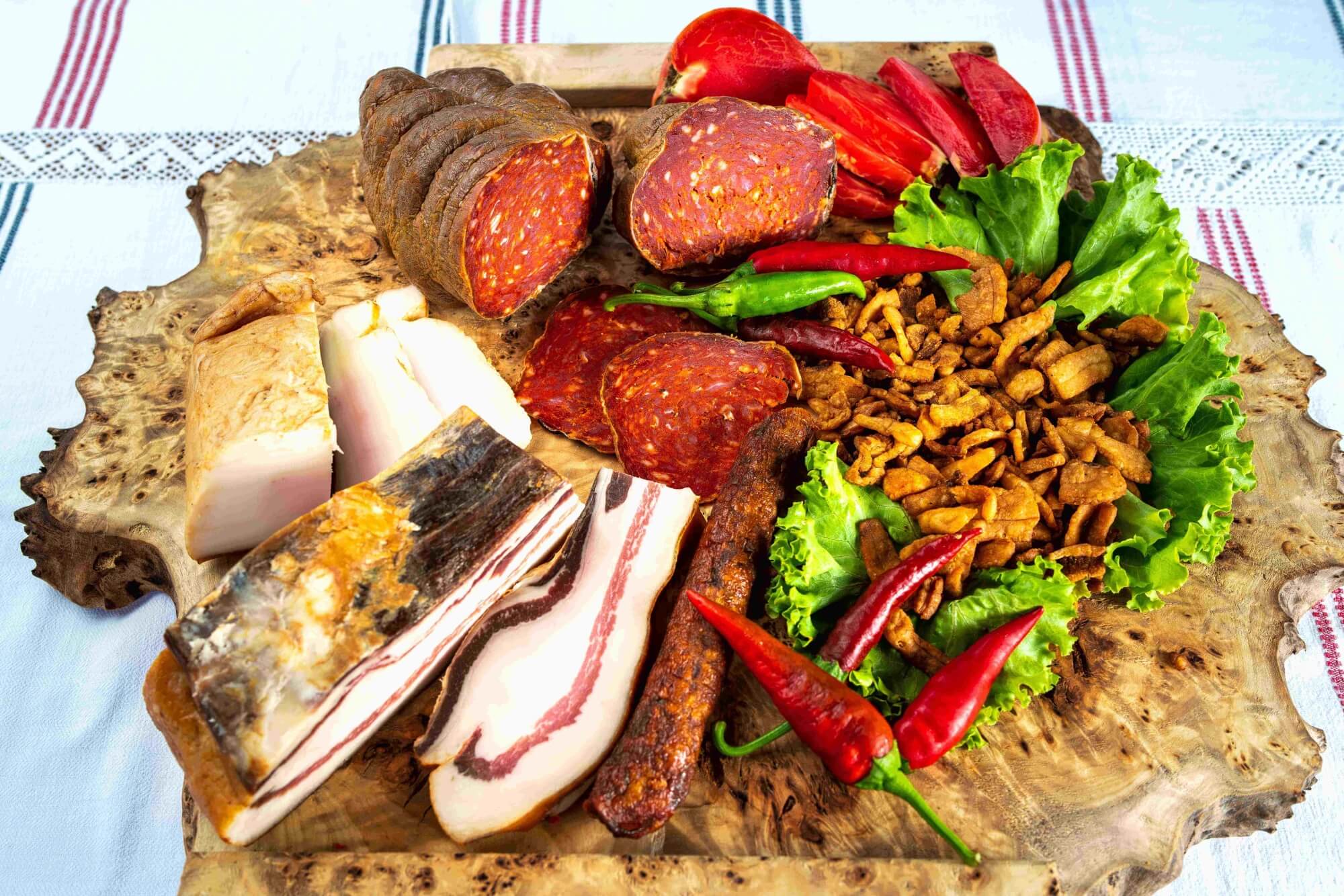 Kulen, čvarci and other specialties at Baranjska kuća © Denis Despot
Kulen, čvarci and other specialties at Baranjska kuća © Denis Despot
That's interesting. In some cases, it might be like two different worlds colliding - people who work in a traditional industry and a traditional environment having to adapt to a very modern way of operating. There's also another potential collision when providers learn of the expectations within modern tourism. Because these people can no longer just work in agriculture. To operate in Seoski Tourism, you're also very much expected to also be a host.
Yes. All of our current service providers who are successful within Seoski Tourism are also great hosts. It's essential. You can see it in almost all of the reviews for this kind of tourism. Guests come for the food and drinks and surroundings, yes. But, what they value the most, what they remember the most, is the host part of the experience. On the estates of Croatian Seoski Tourism, guests are welcomed like family. Across all of Croatian tourism we are expected to be good hosts. It's part of our reputation and the reason why many people come here from all over the world. In Seoski Tourism, it is vital we live up to those expectations.
 Kezele family farm © Davor Konjikušić
Kezele family farm © Davor Konjikušić
Another aspect of this, which is a more recently-observed element, is that visitors often want an insight into the actual lives, even the personalities of their hosts. They want not only to taste the homemade sausages you make, but they also want to know how you do it, where you do it, how you learned to do that. When they go to Spain, they want to know how the people there make their wine. And, when they come to Croatia, they want to learn how we do it here.
So, all in all, those of us in Seoski Tourism are really busy. We are in agriculture, yes, but we are also in tourism and we are also online. With this more recently-observed aspect, we will need to try and devote even more time to our hosting. It can be difficult to balance the demands on your time. But, in our workshops, we are trying to persuade people to talk more about themselves, their lives, their cultural heritage. And, if there isn't time to do everything themselves, then to involve different and often younger generations of the family. Sometimes within the hosting or alternatively just with the online promotion and presence.
 Kezele family farm ethno collection © Davor Konjikušić
Kezele family farm ethno collection © Davor Konjikušić
I've visited some family farms that were right at the start of their journey with Seoski Tourism and they seemed surprised that I was at all interested in what they do and how they do it. I think maybe they thought I was a bit crazy.
Yes, that is a response we sometimes also see at first. I think it's because our generation takes a lot of things for granted. We sometimes think that what we do is just what we do. We are not so good at showcasing it. “Why would I show someone how I make my cheese? I make my cheese like my grandmother used to make it” But, for those who open their doors to Seoski Tourism, inquiries about how they do what they do are only increasing. So, they seem to appreciate how we advise them in the workshops.
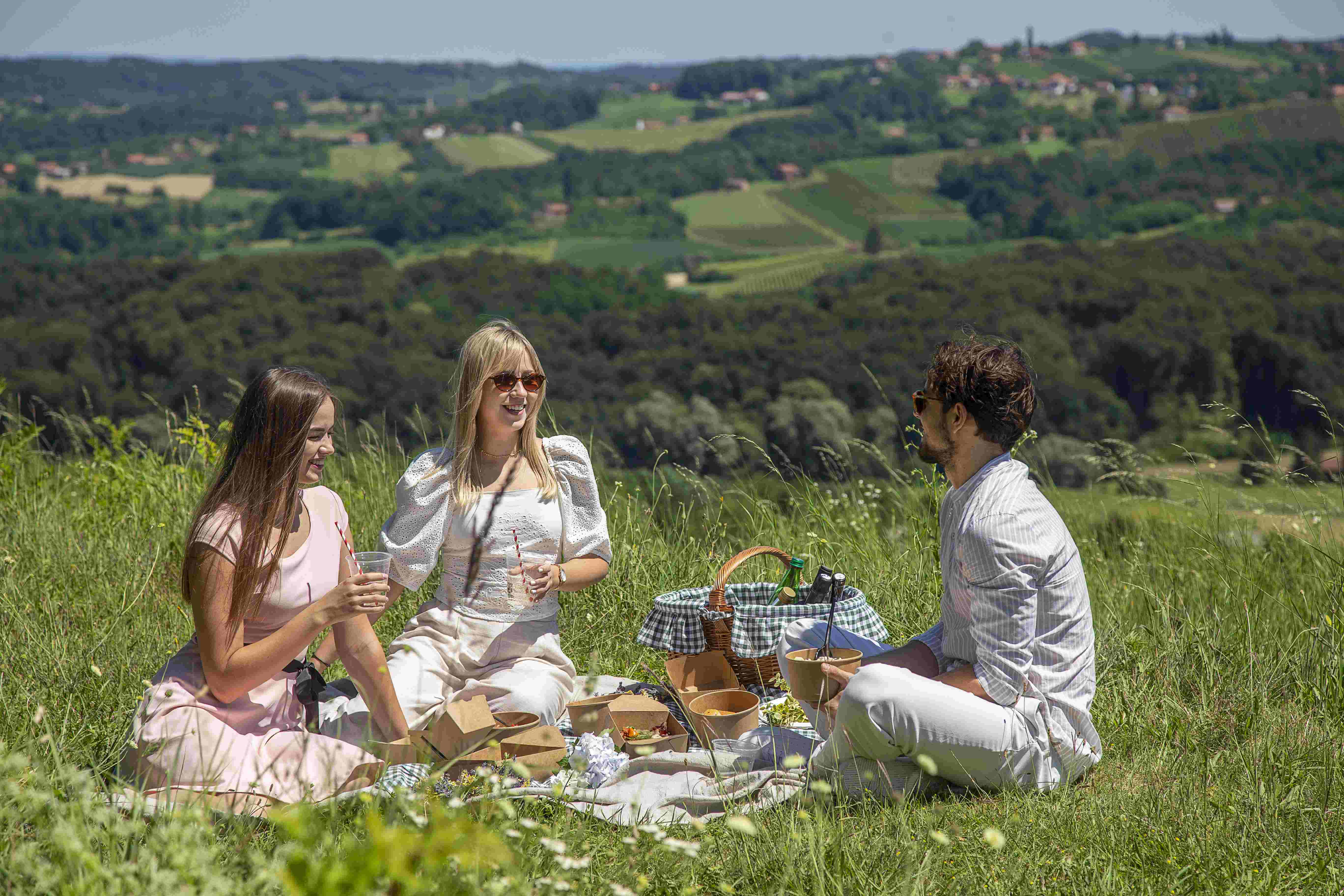 Picnic by Restaurant Međimurski dvori © Igor Nobilo
Picnic by Restaurant Međimurski dvori © Igor Nobilo
We are trying to let our producers know that Seoski Tourism is not just a platform to sell their produce and an overnight stay, but it's a full experience they can sell. There are agricultural farms in Austria that are established in tourism that you must pay only to visit. Of course, that doesn't happen currently anywhere in Croatia, even though some of our Seoski Tourism estates have sections that look like museums.
Some of these aspects are very new. And the feedback is great. I truly believe there are hidden treasures to be discovered in some Croatian villages. We are here to tell that story.
 Selection of food from a Slavonian village © Mario Romulić
Selection of food from a Slavonian village © Mario Romulić
What is so rewarding about Croatian Seoski Tourism that international visitors would want to go to a traditional farm in some inland village instead of lying on the beach in Dalmatia for 14 days?
People come because they really want to see a different side of Croatia. And, there are many different aspects of Croatia to discover – not just Seoski Tourism, but also National Parks and Nature Parks. All of our current trends show us that more and more tourists are willing to come inland from the coast or to explore a different part of Croatia – inland Istria, for example, or continental Croatia.
 Kamačnik river canyon © Aleksandra Kuratko Pani
Kamačnik river canyon © Aleksandra Kuratko Pani
They really want to try authentic, local food. They want to eat healthy, to know what they are eating and how it is made. And, they want to experience flavours that are different from the usual ones they get from the supermarket.
 Traditional Međimurje table at Etno restaurant Međimurski dvori
Traditional Međimurje table at Etno restaurant Međimurski dvori
Also, I would say that with Seoski Tourism, people get to know better an authentic version of Croatia and its culture. It's a story we hear very often from our members. Some of them are visited by large groups from cruisers. These are people who might be on a cruise on the Adriatic and who journey inland for a day trip. Or, it might be a group who are cruising the Danube and disembark to visit a family farm in Slavonia, Baranja or Srijem.
 Prosciutto from Drniš at Agrotourism Kalpić © Ivana Kalpić
Prosciutto from Drniš at Agrotourism Kalpić © Ivana Kalpić
When they visit farming estates on day trips, it's very often a huge 'wow' moment for them. For many, in their minds, Croatia is simply sun and sea. And that's not entirely their fault. We, as a country, have done very little until now to promote alternative sides of Croatia. The visitors experience these wow moments because of the hospitality they receive and because of the tangible aspect of the visit. This is a modern aspect – people want to touch things, know how things feel, taste, smell. They want to ride on horses or feed them. Or take part in cultural activities. These parts of a visit to Seoski Tourism are very difficult to experience anywhere else.
 (left) Ivana Alilović, director of Zagreb County Tourist Board (right) Aleksandra Kuratko, secretary of Udruga ruralnog turizma Hrvatske (Croatian Rural Tourism Association) © Zagreb County
(left) Ivana Alilović, director of Zagreb County Tourist Board (right) Aleksandra Kuratko, secretary of Udruga ruralnog turizma Hrvatske (Croatian Rural Tourism Association) © Zagreb County
Udruga ruralnog turizma Hrvatske's online Seoski Tourism workshops begin today and their physical workshops continue next week in Istria.
If you'd like to read more about rural tourism in Croatia, then look here
Interview: Wild Mushroom Hunting in Zagreb County in Autumn
October 22, 2021 – There's a riot of colour in the branches of trees right now. What better time to go mushroom hunting in Zagreb County?
Autumn in Croatia is the perfect time to explore nature. The country's mountainous regions are currently being enjoyed by walkers and hikers. In less hilly regions, people take to walking the forests and riversides. There, an eruption of colour as the trees respond to the season – red, orange, yellow, purple, brown. Autumn's colours are epic. But, they're not around forever. Catch them while you can.
One resident who is sure to take in the full range of autumn's splendor is Hrvoje Banaj. An outdoor enthusiast from near Zagreb, at weekends, he can be found exploring the forests and mountain of Medvednica, or somewhere else around Zagreb County. He's been walking the woods since he was a child, accompanied by his father, who taught Hrvoje about mushrooms.

You can collect wild mushrooms across much of Croatia. But, Hrvoje thinks mushroom hunting in Zagreb County is particularly good. Certainly, you can find a surprising bounty in the woods of Zagreb County, as TCN found out last year on a truffle hunting trip.
There are groups of wild mushroom enthusiasts in Croatia. Also, you can find some expert forest guides who know about identifying edible mushrooms in the wild. However, it's not incredibly common to come across someone in Croatia who has that knowledge and who speaks English. Therefore, we couldn't pass up the opportunity to speak with Hrvoje to ask him a little about his experience of mushroom hunting in Zagreb County.

My name is Hrvoje. I grew up in Zaprešić and I still live there. I attended university in Zagreb, where I studied German language and literature and phonetics. Also, my first course was organ playing. I'm a concert organist.
I've been hunting mushrooms since I was 5 or 6 years old. A very early age. My father was a lifelong forest engineer. So, it was a normal part of his work to go into the woods at all times of year, and discover what was there. For him too, mushrooms were a focus of interest.
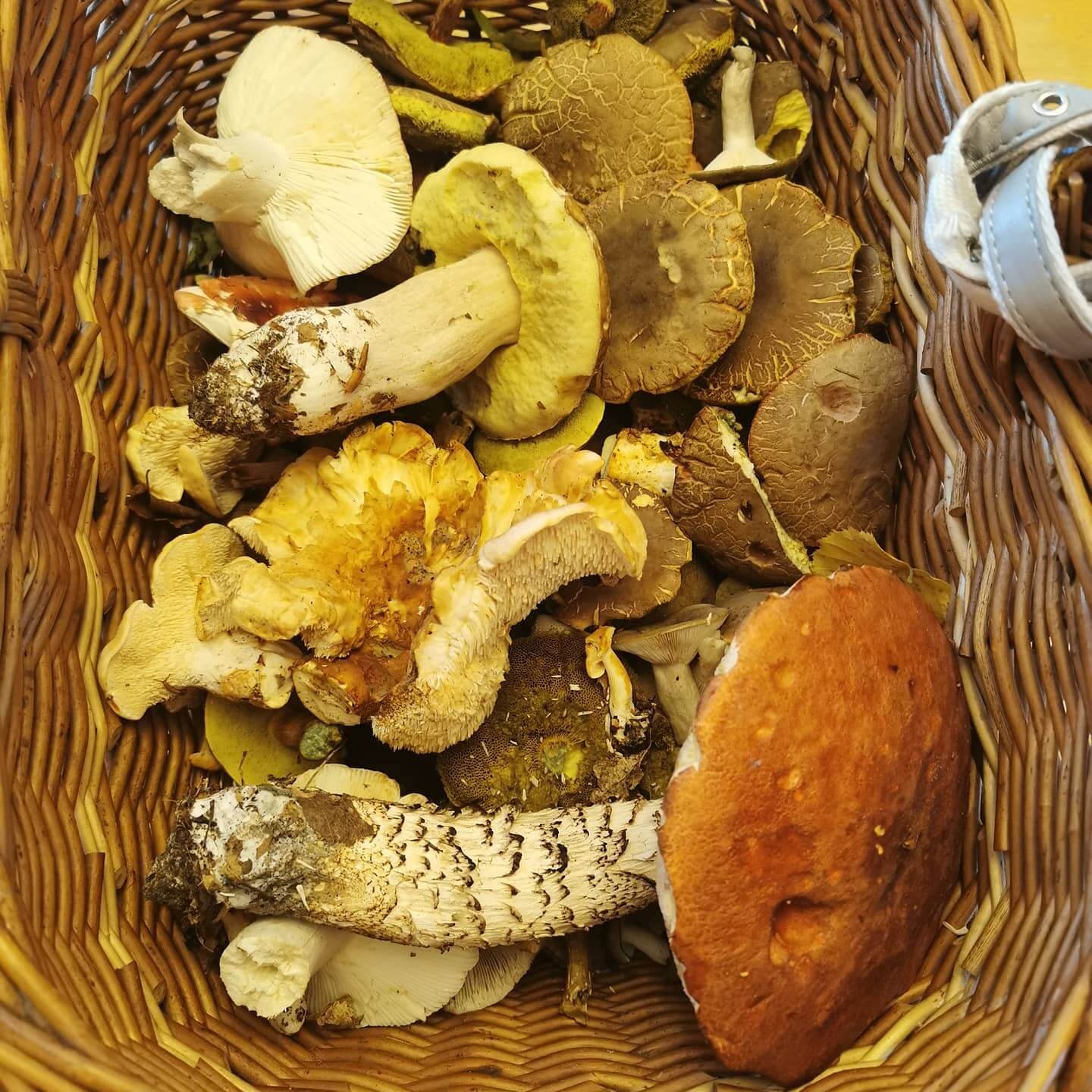
He'd been going into the woods since he was 13 or 14 and learned about the different kinds of mushrooms from several older, experienced people. As an adult, he bought two detailed books about mushrooms which he learned from additionally. Of course, I read them too. There was no internet back then. We still have those books.
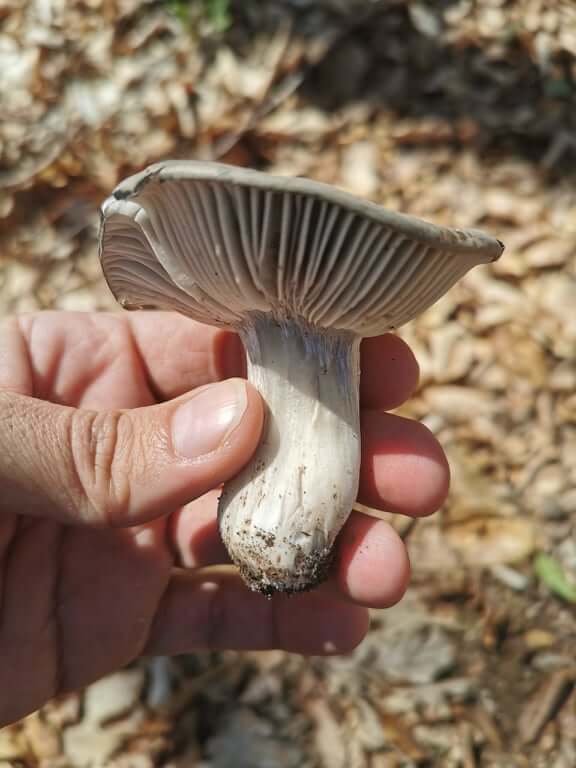
My dad's work was all around Zagreb and Zagreb County. Often, he would take me with him. He has been retired for a few years now. He no longer has the passion for it as he had had back in the years when he worked. But, I still go mushroom hunting in Zagreb County and I love it.
You can find lots of different kinds of mushrooms all over Croatia. I've explored the woods and picked mushrooms across much of the inland of the country.
In Zagreb County, the edible mushrooms I've personally seen are; Morels, Chicken of the Woods and all kinds of Porcini mushrooms. Also, Hedgehog mushroom – one of my favourites to eat - and all kinds of Puffballs. I saw a Giant Polypore recently too, while I was walking on Sljeme.
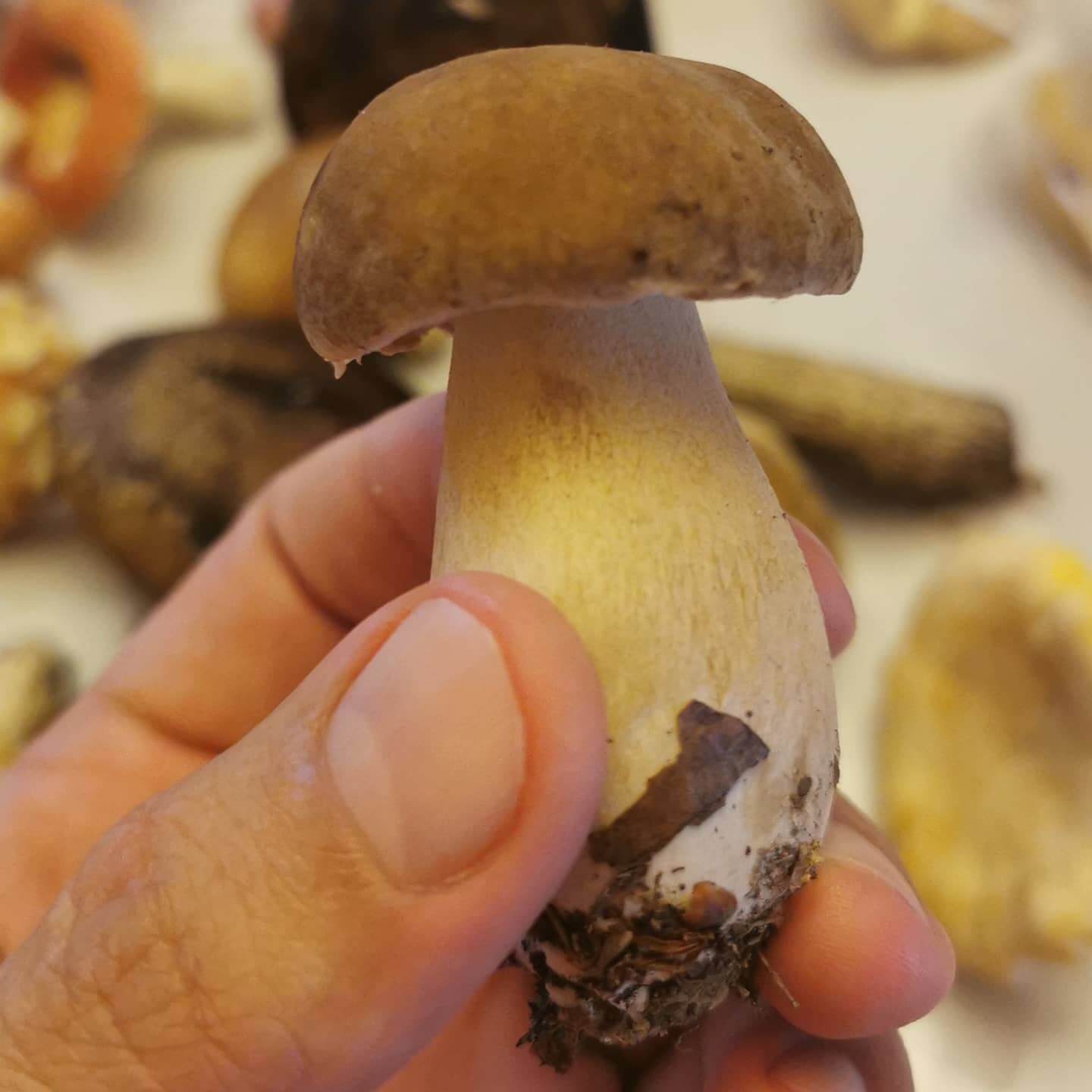
You find Chanterelles and Parasol mushrooms here, sometimes in large numbers. Horn of Plenty and Horse mushroom you also see a lot. Several types of Russula mushrooms grow here. I've never seen a St George's mushroom here. But, I saw and ate them in Slavonia. My father has roots there, so I've visited a lot.

Although autumn is usually associated with mushroom picking, that's actually a widespread misperception. It's true that some of the more popular and well-known wild mushrooms are most common in autumn. That's probably where this thinking comes from.
Actually, mushrooms grow all year round in Croatia. Some kinds you only usually see in the springtime. Similarly, many people believe that you have to go into forests to find mushrooms. But, some edible mushrooms in Croatia actually prefer to live in direct sunlight and you can find them at the sides of fields.

If you want to go truffle or wild mushroom hunting in Zagreb County, it's best to go with a guide. You can find out more about guides and groups from Zagreb County Tourist Board here.
You can see all the different types of edible mushrooms that grow in the wild in Croatia here.
All photos used were taken in Zagreb County and come from the private collection of Hrvoje Banaj, unless otherwise accredited
Via Vino: Zagreb Wineries Meet Autumn Art, Music, Food & Cinema
October 6, 2021 - Just a short drive from the Zagreb is part of Croatia's fantastic wine story. A new autumn initiative from the Zagreb County Tourist Board brings art, music, food and cinema to Zagreb's vineyards. Meet Via Vino.
One of the things that visitors to Zagreb often comment on is just how accessible it is.With its abundant parks, it is a great city to walk in.
Those who are a little more adventurous are discovering just how accessible - and fascinating - the region around Zagreb is. The launch of the Around Zagreb initiative last year, bringing the very best of the city of Zagreb, Zagreb County, and now also Zagorje, has added a new dimension to Zagreb tourism.
The Zagreb County Tourist Board has been particularly active in recent times promoting the authentic treasures of the region, as well as helping to bring the indigenous products of its producers to the market. One small example of this is the development of the Zagreb truffle hunt, something that perhaps even many locals are not aware of. Local producers are bying into the brand of authentic Zagreb County and its local products, and one can now enjoy Zagreb truffles in strukli, as well as pralines. And the latest Zagreb truffle delicacy was unveiled at the Via Vino press conference this morning - ajvar with black truffles.
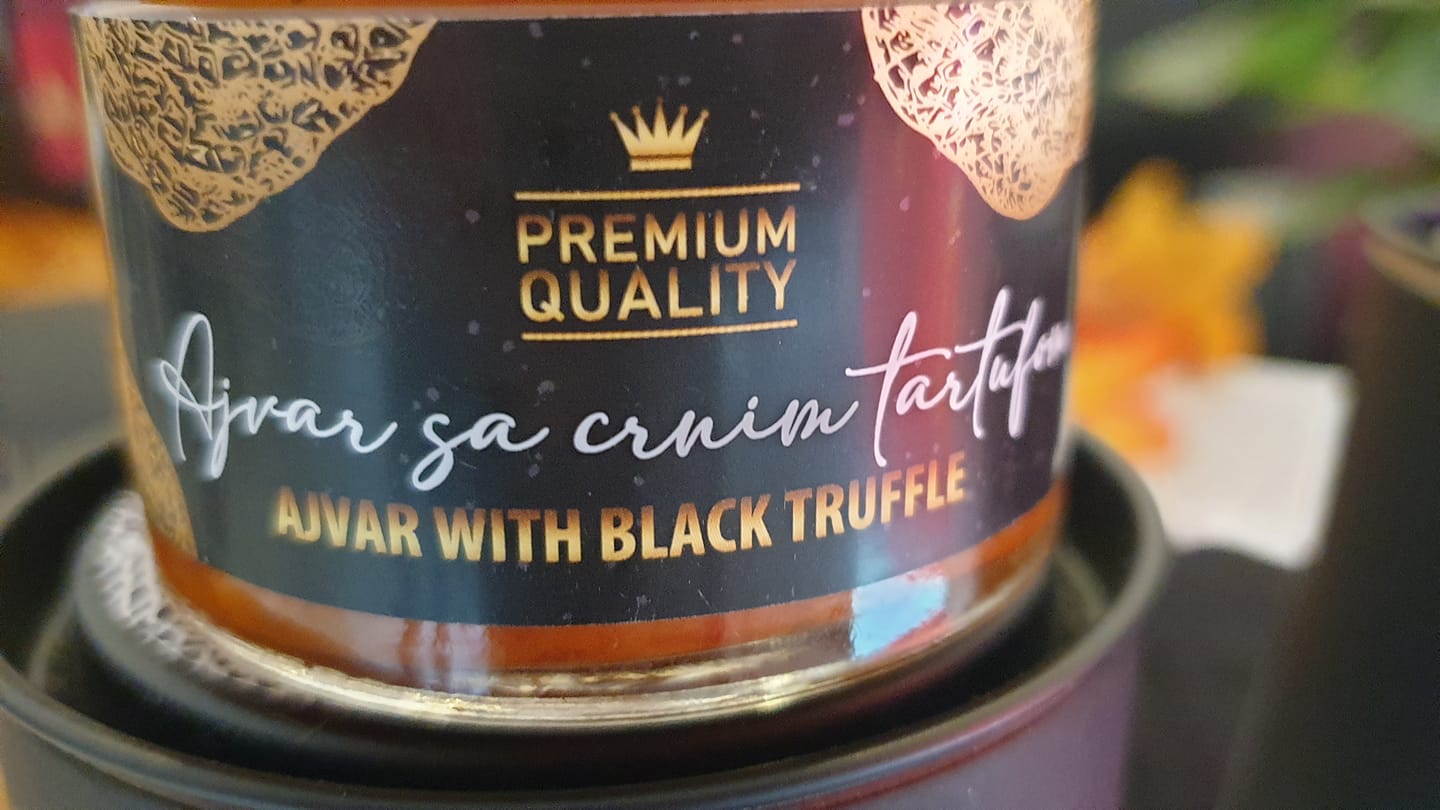
A new initiative called Via Vino has been launched by the Zagreb County Tourist Board, which was unveiled at a press conference in their office in Zagreb this morning, complete with new promotional video of the wine roads of Zagreb County. The Croatian capital is blessed with several wine regions surrounding the city on all sides - Sveta Ivana Zelina, Samobor, Jastrebarsko, Ivanic-Grad, and Zapresic.
From October 15 to November 15, the wineries of Zagreb County will be welcoming visitors to experience their wines, while also combining that experience with some signature events combining art, food, wine and music.
Via Vinaria takes place every Friday and Saturday within the month, when more than 50 wineries in Zagreb County will open their cellar doors for wine tasting. A great day out from the city, and a chance to enjoy the county's alluring nature while sampling its finest wines.
Looking to catch the latest Bond movie in some style? Via KINO is the place to be on October 15 at the Braje vineyard in Plesivica, where chestnuts and Portugiesac will accompany 007's final mission. Additional sustenance will be provided by Marin Medak and his Food Truck.
Via KINO will take place on October 23rd. in the central park of Velika Gorica. Although this is not a wine region, the screening of the film will feature an exhibition of photographs of winemakers, accompanied by homemade spirits by Brigljević distillates and gin. As this area is known for truffle hunting, you will have the opportunity to taste truffles in typically continental dishes.
Via VINO will also enrich the Via ART event, which takes you along the picturesque Samobor road of pleasures, with recognizable wines, selected delicacies and an exhibition in the vineyard! It takes place on November 6 and follows the well-known feast of St. Martin, patron saint of winemakers. Take a look at the exhibition of photographs of winemakers from Zagreb County in the Samobor Museum.
Have you ever experienced a classical music concert in a vineyard? A good wine is like a good concert, it lasts a short time, but it is remembered for a lifetime. It’s new in every sip and changes with each new note. Therefore Via NOTE on October 16 brings concerts to the fairytale environment of the falling slopes of the vineyards of the Schwartz manor in Nespeš, in Sv. Zelini. The atmosphere will be enriched by the offer of dishes from Food Truck by Marin Medak, as well as a selection of wines from the Litterarii winery.
"We all already know that Zagreb County is the green living room of Zagreb. It offers sustainable tourism, numerous outdoor facilities but also an unforgettable eno-gastronomic experience, 365 days a year," said the director of the Zagreb County Tourist Board Ivana Alilović.

"As a year-round destination, it offers new facilities every season. Thus, our wine roads and events related to eno-gastronomic content are currently very attractive. The rich gastronomic offer and the increasingly strong development and branding of wine roads - from Plešivica to Zelina and Ivanić-Grad as the home of škrlet - are one of the strongest assets for the tourist and economic development of Zagreb County.
"We are proud that for the first time the Zagreb County Tourist Board is conducting such a large destination campaign in which over 60 key entities in the area of the Zagreb County wine scene are participating. For us, this is a big step towards positioning the entire Zagreb County as an authentic boutique destination."
For visits to wineries it is necessary to make an appointment in advance.
Admission to the events is limited, and for those who do not have a Covid passport at the entrance, a Covid test will be organized which is included in the ticket price.
The Via VINO event is organized by the Zagreb County Tourist Board, who you can contact for more information.




